Are if there any electrical reasons not to operate or store my Dell OptiPlex computers below the altitude of -50 feet, as written in the specifications?
Screenshot of the original Dell OptiPlex specifications I saw:
Are if there any electrical reasons not to operate or store my Dell OptiPlex computers below the altitude of -50 feet, as written in the specifications?
Screenshot of the original Dell OptiPlex specifications I saw:
Hard disks are exquisite aerodynamic devices that depend on air pressure for normal operation. The head flies on an air cushion at about 5 nanometres! Here's a picture from a patent:

They have a well known upper altitude limit (Seagate says 10000') but it makes sense they would also have a low limit. I doubt that a few hundred metres would matter, but I would expect them not to work properly at 2 atm.
When not operating, hard disks are very rugged.
Fans in computers, especially servers with powerful fans, might stall if the air density is too high.
Thermal and insulation properties of air improve with higher pressure, so that shouldn't be a problem.
What if it was just testing logistic reasons? In other words, they do not test at lower than minus 50 feet so they do not guarantee the operation of the device.
From DTB Environmental Chamber Testing
Altitude Testing. Our testing facilities simulate altitudes from below sea level (-2,000 ft), to a high altitude of 100,000 ft.
From Dell™ Inspiron™ 6400/E1505 Owner’s Manual
From Dell PowerVault MD3260/3260i/3660i/3660f/3060e Storage Arrays - Getting Started Guide
The Google search of site:downloads.dell.com/manuals altitude 15.2 gives 1,340 hits. Pure Opinion - Would you believe -50ft to 10,000ft is the limits of their testing facility!
As demonstrated by the DTB Environmental Chamber Testing link, testing facilities can simulate any environment with vacuum pumps. There is nothing unique with -50ft (-15.2m) from a location in the world perspective!
Death Valley is 86 meters below sea level. Odds are Dell products will work there.
If they list -50ft to 10,000ft, then that must be the limits of their testing facility.
Yes sir, there is a reason.
You know us engineers -don't you?
Everything is a formula - as is the air pressure at certain elevations. With the change in air pressure comes change in thermal conductivity/radiation/convection rating.
So to not roast your device, the validated operational spectrum is noted in the datasheet.
The keyword is 'validated' and not 'reason'.
Fun question: If altitude is measured in height above sealevel, that would put -50ft below the water surface - which in itself is dangerous for electronics, isn't it?
On the other hand: In the Netherlands, for example, there are areas with below 0 altitudes which are perfectly dry. So maybe your device is rated for use in the Netherlands.